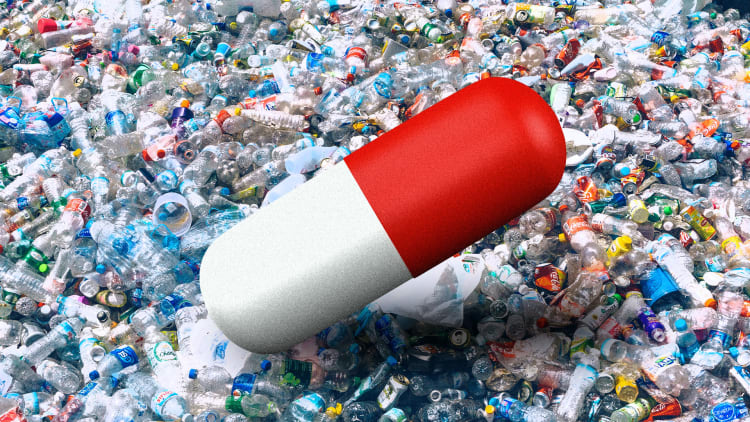Plastic is everywhere. From water bottles to food packaging, it has become an essential part of our daily lives. But its durability—what makes it so useful—also makes it a major environmental threat. Plastic waste lingers in landfills and oceans for centuries, breaking down into microplastics that spread across the planet.
Now, scientists are experimenting with an astonishing solution: using engineered bacteria to transform plastic waste into something unexpectedly valuable—painkillers.
Why Plastic Waste Is So Hard to Handle
Plastic doesn’t biodegrade easily because of its strong chemical bonds. Unlike food scraps or paper, plastic resists natural breakdown. Recycling helps, but only a fraction of plastic ever gets recycled, and much of it ends up polluting ecosystems.
Scientists have long sought ways to not just recycle plastic, but upcycle it—turning it into materials or chemicals that are more useful than the original waste. That’s where biotechnology comes in.
How Bacteria Can Help
Certain bacteria can naturally consume plastics, especially PET (polyethylene terephthalate), the plastic commonly used in bottles and containers. By breaking plastic down into smaller chemical components, these microbes turn waste into building blocks.
But researchers have gone a step further. Using genetic engineering, they have programmed bacteria to not only digest plastic but also convert the resulting molecules into medically valuable compounds. One of the most exciting outcomes is the production of painkillers.
From Plastic to Painkillers: The Science
Here’s how the process works in simplified steps:
- Plastic Breakdown
Engineered bacteria release enzymes that chop up plastic into its smaller units (monomers). Think of it as turning a brick wall back into individual bricks. - Conversion into Precursors
These monomers are then reprocessed by the bacteria’s metabolism. Scientists modify the bacteria’s genetic instructions so they can funnel these molecules into entirely new chemical pathways. - Production of Painkillers
The end result is the creation of compounds with analgesic properties—similar to ingredients found in over-the-counter or prescription pain relief medications.
This is a leap forward because instead of plastics being useless waste, they can become the raw material for pharmaceuticals.
Why Painkillers?
Painkillers are among the most widely used medicines worldwide. But producing them often requires complex chemical processes and raw materials derived from petroleum or plants. If bacteria can make them directly from waste, it:
- Reduces reliance on fossil fuels
- Provides a sustainable medical supply chain
- Solves two problems at once: plastic waste and drug manufacturing
The Potential Impact
- Environmental Gains: Massive amounts of plastic could be diverted from oceans and landfills.
- Medical Advances: A reliable, sustainable source of painkillers could make medicines more affordable and accessible.
- Circular Economy: Instead of being linear (make, use, throw away), plastic’s life cycle could become circular (use, recycle, repurpose).
Challenges Still Ahead
While the idea is groundbreaking, it’s still in the early stages of research. Scientists face key challenges:
- Scaling Up: Laboratory success doesn’t always translate to industrial production.
- Efficiency: Current bacteria may not convert enough plastic quickly enough to be practical.
- Safety: Genetically engineered microbes need strict controls to prevent unintended consequences.
Despite these hurdles, progress is moving fast, and many experts believe this approach could become part of a broader strategy for tackling both pollution and medical needs.
The Bigger Picture
This research highlights the incredible possibilities at the intersection of biology and sustainability. Instead of seeing plastic as permanent pollution, we may one day treat it as a valuable resource—raw material that, with the right microbial helpers, could save lives.
What was once trash might become tomorrow’s medicine.
